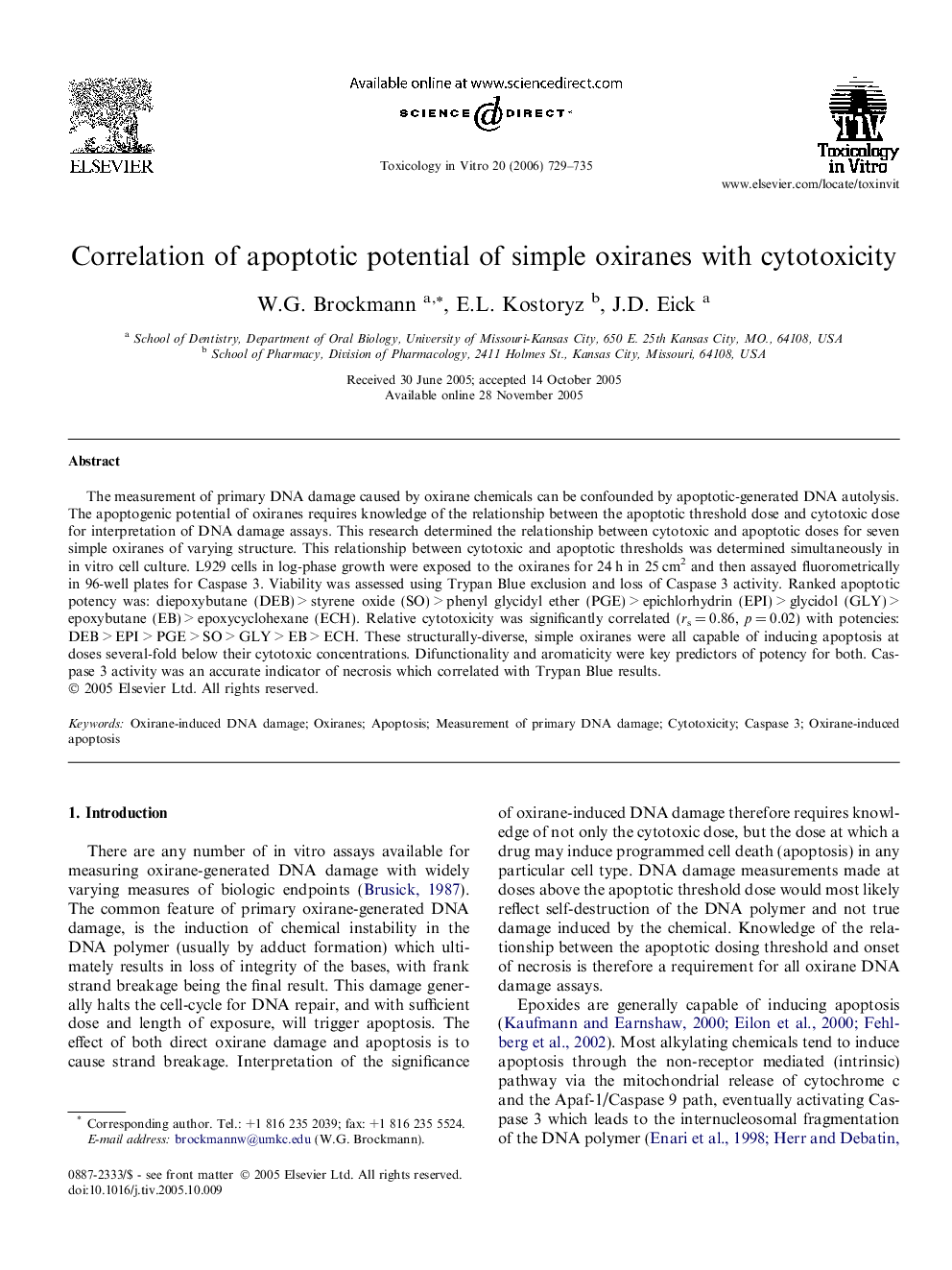| Article ID | Journal | Published Year | Pages | File Type |
|---|---|---|---|---|
| 2604010 | Toxicology in Vitro | 2006 | 7 Pages |
The measurement of primary DNA damage caused by oxirane chemicals can be confounded by apoptotic-generated DNA autolysis. The apoptogenic potential of oxiranes requires knowledge of the relationship between the apoptotic threshold dose and cytotoxic dose for interpretation of DNA damage assays. This research determined the relationship between cytotoxic and apoptotic doses for seven simple oxiranes of varying structure. This relationship between cytotoxic and apoptotic thresholds was determined simultaneously in in vitro cell culture. L929 cells in log-phase growth were exposed to the oxiranes for 24 h in 25 cm2 and then assayed fluorometrically in 96-well plates for Caspase 3. Viability was assessed using Trypan Blue exclusion and loss of Caspase 3 activity. Ranked apoptotic potency was: diepoxybutane (DEB) > styrene oxide (SO) > phenyl glycidyl ether (PGE) > epichlorhydrin (EPI) > glycidol (GLY) > epoxybutane (EB) > epoxycyclohexane (ECH). Relative cytotoxicity was significantly correlated (rs = 0.86, p = 0.02) with potencies: DEB > EPI > PGE > SO > GLY > EB > ECH. These structurally-diverse, simple oxiranes were all capable of inducing apoptosis at doses several-fold below their cytotoxic concentrations. Difunctionality and aromaticity were key predictors of potency for both. Caspase 3 activity was an accurate indicator of necrosis which correlated with Trypan Blue results.
